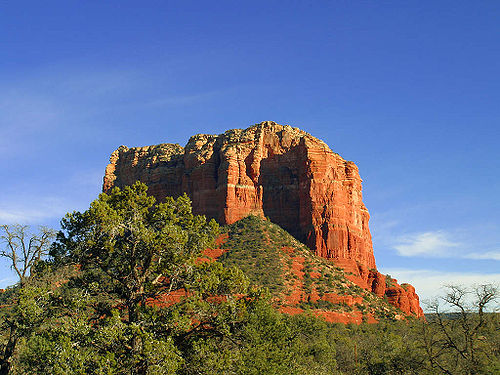Mesanoun
Flat area of land or plateau higher than other land, with one or more clifflike edges
Mesa
A high tableland; a plateau on a hill.
Mesanoun
flat tableland with steep edges;
Mesanoun
a city just east of Phoenix; originally a suburb of Phoenix
Mesanoun
an isolated flat-topped hill with steep sides, found in landscapes with horizontal strata.
Mesa
A mesa is an isolated, flat-topped elevation, ridge or hill, which is bounded from all sides by steep escarpments and stands distinctly above a surrounding plain. Mesas characteristically consist of flat-lying soft sedimentary rocks capped by a more resistant layer or layers of harder rock, e.g.
Buttenoun
(US) An isolated hill with steep sides and a flat top.
Buttenoun
A detached low mountain, or high rising abruptly from the general level of the surrounding plain; - applied to peculiar elevations in the Rocky Mountain region.
Buttenoun
a hill that rises abruptly from the surrounding region; has a flat top and sloping sides
Buttenoun
a town in southwestern Montana; center for mining copper
Buttenoun
an isolated hill with steep sides and a flat top (similar to but narrower than a mesa).
Butte
In geomorphology, a butte () is an isolated hill with steep, often vertical sides and a small, relatively flat top; buttes are smaller landforms than mesas, plateaus, and tablelands. The word butte comes from a French word meaning knoll (but of any size); its use is prevalent in the Western United States, including the southwest where mesa (Spanish for ) is used for the larger landform.












